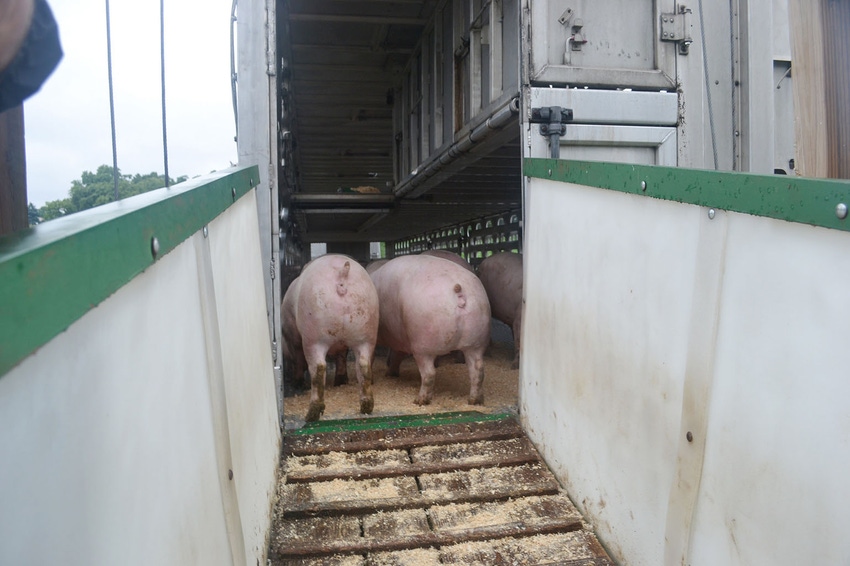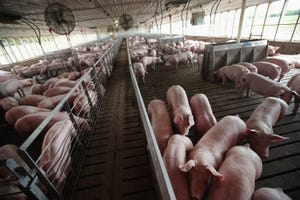Pork exports rip, but hog prices drop
It appears that a sustained period of low prices is necessary before a real and sustained contraction in the industry occurs.
July 6, 2020

Pork exports are record high so far in 2020. China is now our No. 1 export customer followed by Mexico and then Japan. All my predictions regarding the surging amount of export business has been accurate, yet hog prices remain stuck in the mud.
There is no playbook for the market as a series of strange events unfolded during the course of 2020. These are uncharted waters. As we watched the coronavirus shut down a major province in China, we began to wonder out loud what will happen if/when this virus makes its way to the United States.
I remember warning in my livestock wire, in February, of dire consequences should the virus disrupt slaughter facilities. At the time, however, I had no idea that a nearly nationwide shelter-in-place order would come down. I had no idea the foodservice sector would be nearly completely shut down for months, not weeks. I had no idea the degree of impact the virus would eventually have on the meat packing industry.
Honestly, at first, I had no idea that as the pork cutout value soared as production dropped, that the CME lean hog index would move sharply higher and not lower. The opposite occurred in the fall of 1998. The industry and the way hogs are sold has changed dramatically since 1998. In times like these, sometimes experience can actually work against a person. I quickly figured out what was happening.
The new playbook includes the prospect of putting fat hogs and/or baby pigs down. It involves feeding hogs a ration that will prevent growth and weight gain. It involves measuring record large pork exports while most producers continue to sell pigs well below breakeven.
The forces at work appeared to have triggered a widespread and large culling of breeding stock. Sow slaughter during the second quarter surged higher, or so it appeared. Turns out part of the surge in "sow slaughter" included overly finished market hogs that were approaching sow weight. This represented a far better outlet for over-finished hogs than euthanasia. Measuring breeding herd liquidation has always been difficult mostly because identifying and measuring gilt replacement is impossible. This year, adding in a new variable of over-finished hogs entering the sow kill made measuring contraction impossible.
The June Hogs and Pigs Report only contained a tiny bit of contraction. The kept-for-breeding herd was down 1% compared to last year. The problem, however, the efficiency of increased pigs per litter means no contraction in production. Indeed, the June Hogs and Pigs Report will lead the USDA to project record large pork production for 2021.
There has been no accounting or measuring of fat hogs euthanized. This likely means there were not that many put down, perhaps far less than what was feared. The National Pork Producers Council has not come forth with any numbers to present to the USDA. Indeed, most of these hogs appeared in the kept-for-market inventory in the June report. We have 12% more hogs to market during the course of the summer.
The transition from summer marketings into fall marketings could mean a steady and painfully large supply of pork for the remainder of 2020. In the face of what should continue to be record large exports, oversupply will likely dominate and keep hog prices depressed near historically low levels. Foodservice demand remains crippled.
Hog futures usually peak in early to mid-July before working lower into the fall lows. This year there's been no rally into the first half of July. Instead the negative impact of the June Hogs and Pigs Report slammed prices downward. The fall and winter contracts had been building a nice base from which we expected higher prices to prevail. The lack of contraction in the hog and pig report changed all of that.
August hog futures gapped lower and after trading for five sessions since the report was released, the gap has not been filled. In fact, the market has not even come close to filling the gap. This is a bearish sign.
I'm not sure what the next major price moving factor is going to be. Difficult to predict, but it feels like it won't be a bullish development. It appears that a sustained period of low prices is necessary before a real and sustained contraction in the industry occurs. Indeed, in today's marketplace if you're not a low-cost producer of pork, corn and soybeans, pressure on the bottom line is coming fast.
The U.S. relationship with China appears to worsen each week. China is an adversary of the United States. This was openly stated by Vice President Pence recently. Everyone needs to understand this, especially if your livelihood depends upon it. Right now, China is the U.S.'s largest importer of pork. This will continue until China no longer needs large quantities of pork. They'll likely shut off U.S. imports first, followed by European Union imports followed by imports from South America. The U.S. pork industry, without contraction, will face a serious crisis when this occurs.
Source: Dennis Smith, who is solely responsible for the information provided, and wholly owns the information. Informa Business Media and all its subsidiaries are not responsible for any of the content contained in this information asset. The opinions of this writer are not necessarily those of Farm Progress/Informa.
About the Author(s)
You May Also Like





